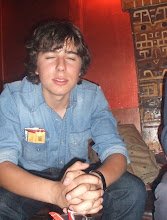The nine-track LP opens with a jolly instrumental entitled The Emperor of Wyoming which is then followed by the semi-autobiographical track named The Loner. As a standalone song, it is one of Young’s most recognisable works and among the best tracks on the album. Other highlights on the album include the guitar-driven I've Been Waiting For You, the more laid back ballad entitled The Old Laughing Lady (including some outstandingly well arranged backing vocals) and the soulful upset of I've Loved Her So Long. The album's concept seems to track the beginning and end of a turbulent romance.
At a length of thirty-six minutes, the album is anything but overlong. In fact, the song lengths seem quite appropriate with the music in this case. Then again, the nine-and-a-half minute closing track The Last Trip to Tulsa is traditional Young, as he often places at least one song of epic length on the majority of his albums. This particular track is an absurdist one, drenched in irony and steeped in weird, wondrous humor. Although this is not a great album by any means, it is one which boasts the introduction to my favourite musician and therefore, to me, there is something undeniably special about each listening.
The album has a much heavier tone than its easy going predecessor. Electric guitar jams alternatively take preference over Young's previous acoustic-based album. It is rock n' roll at its most purest sound, and from the opening Cinnamon Girl to the epic Cowgirl in the Sand the album continuously pumps out amplified works of electrifying power. The album's self-titled track defines Young's career with a rare sense of beauty that few artists can even establish after decades worth of albums. The high-pitched backing vocals bare much contrast to Young's nasally, down-trodden voice while Young's heartfelt lyrics suggest rather than state epitomes of loss and regret. However, in the case of Everybody Knows This Is Nowhere, Young demonstrates an eloquent vocal range of stark contrast to his previous solo work.
Much of the guitar work on heavy rock tracks such as Down by the River sound great because of their sketchy, simplified chord progression. The folk-rock sound achieved by the album is owed to such guitar playing. Condensed drum beats and unpolished production techniques somehow manage to make the sound even better. The less appreciated track Running Dry (Requiem for the Rockets) is a multi-layered song which references the backing band's roots and combines some grating violin strokes with a suitably sluggish rhythm.
This is an album which retains the listener's attention throughout, with mesmerising guitar solos of great length and power. It is this that makes the album such a success; the talent of elemental garage rockers such as the late guitarist Danny Whitten (who also provides shadowy backing vocals) and the longtime bassist Billy Talbot ultimately define the impulsive sound of the horse. Neil Young, on the other hand, proved that he was a talent to be sought after.
Upcoming Neil Young Reviews: After the Goldrush (1970) and Harvest (1972).

IS VERY GOOD
ReplyDelete